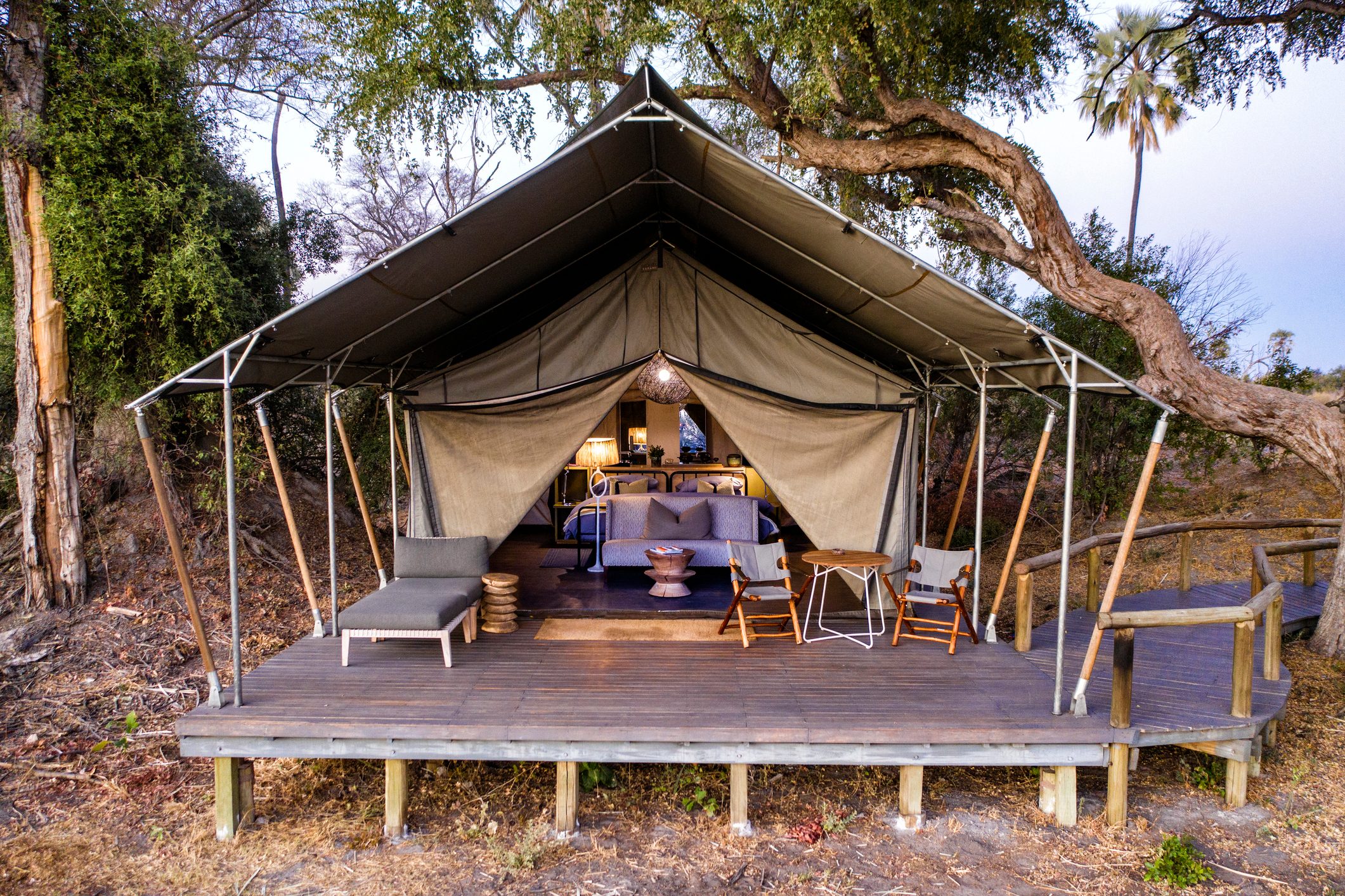Love the outdoors but also love your creature comforts? Glamping may be the answer.
Our editors and experts handpick every product we feature. We may earn a commission from your purchases.Learn more.


Love the outdoors but also love your creature comforts? Glamping may be the answer.
Our editors and experts handpick every product we feature. We may earn a commission from your purchases.Learn more.
During the pandemic, interest in camping surged and it has remained at record levels, but let’s face it, camping isn’t necessarily for everyone. Granted, camping gets you outdoors and connects you with nature—it’s peaceful, serene and meditative—but frankly, sometimes it’s just not that comfortable. That’s where glamping comes in. What is glamping, exactly? It’s sort of like luxury camping that’s both outdoorsy and also pleasant. Essentially, it’s the best of both worlds, and according to a recent KOA survey, 40% of campers want to take a glamping trip. It’s also ideal camping for beginners.
I’ve gone glamping in a tiny rustic wagon in North Dakota, off-the-grid cabins with wood-fired stoves in New York’s Catskill Mountains, teepees in Utah and Mexico, canvas tents and caves in Jordan, and everywhere in between. It’s been a thrilling experience for me, and my goal is to explain why you should give glamping a shot.
The glamping definition comes from its status as a portmanteau, a word made by combining the spellings or meanings of two or more words. In this case, the word glamping is a blend of glamorous and camping, implying a more luxe version of traditional camping. However, the meaning of glamping itself is up for interpretation, as there is no single style of glamping experience.
Just like traditional camping, there are a range of glamping experiences, levels of luxury and add-on activities. For instance, glamping could involve a simple safari tent with a basic bed in the desert, or it could be an ultra-glamorous treehouse in the woods. Instead of bringing your own tent, sleeping bag, mattress, blankets and other camping supplies, with glamping, you pretty much just show up and enjoy the experience. Instead of hauling firewood and building a fire, at many glampsites, the fire is already roaring when you arrive, so you can just plop down and enjoy some campfire stories. And, yes, most glamping options offer some form of a bathroom (more on that below).
There are glamping “hotel” chains, such as Under Canvas, which has 12 locations outside of popular national parks around the U.S., as well as independent glamping sites that can be booked through apps like HipCamp and Campspot.
According to the American Glamping Association, an organization dedicated to supporting glamping businesses, the word glamping was first used in the early 2000s in the United Kingdom, when young families were seeking more affordable luxury holiday experiences. Glampsites were popping up across the U.K. and, soon after, the United States and the rest of the world. As early as the 2010s, National Park camping in the United States expanded to include a handful of glamping options.
According to the Oxford English Dictionary (OED), the word glamping was first recorded in The Guardian in 2005, but it wasn’t until 2016 that it was officially added to the dictionary. The current glamping definition in the OED reads: “A form of camping that involves accommodation and facilities more luxurious than those associated with traditional camping.”
Just like there is a wide range of campsites and camping options, there is also tremendous diversity in terms of glamping setups. Amenities vary dramatically between glampsites, but you can pretty much count on having all the basic necessities like a bed, blankets, sink and toilet. In some very rustic or backcountry settings, the toilet may be outside the tent or tipi, but in most cases, it will be within the structure.
Some glamping accommodations may have a tiny food-prep area and some basic cooking equipment, while others may have elaborate kitchen facilities or on-site restaurants. More luxurious glampsites may even have hot tubs, saunas and power showers. They may also offer activities like hiking, cooking classes and ATV excursions, which may or may not be included in the price. If any particular amenity or activity is important to you, check with the business owner in advance to confirm it’s available.
Below is a list of different types of glamping accommodations, but for further inspiration, check out these luxury camping adventures.
Glamping options are so varied that this style of holiday can appeal to hardcore campers and hesitant city slickers alike. Personally, I enjoy so-called hardcore camping (which is usually free camping), where you have to hike several miles into the wilderness with a backpack full of supplies and it’s budget-friendly. That said, I also love glamping because I’m more comfortable and have more time to relax. With glamping, I can spend more time enjoying my surroundings instead of setting up and breaking down my tent, building fires, filtering water and the like. I also enjoy just being able to show up in a car with whatever I want, instead of struggling to fit everything I need into a small backpack and worrying that I won’t have room for everything.
If you’re not yet sold on the idea, here are some of the main pros of glamping.
Now that you’ve learned about glamping, read on to discover the best RV park and hiking trails in every state.
Sources: